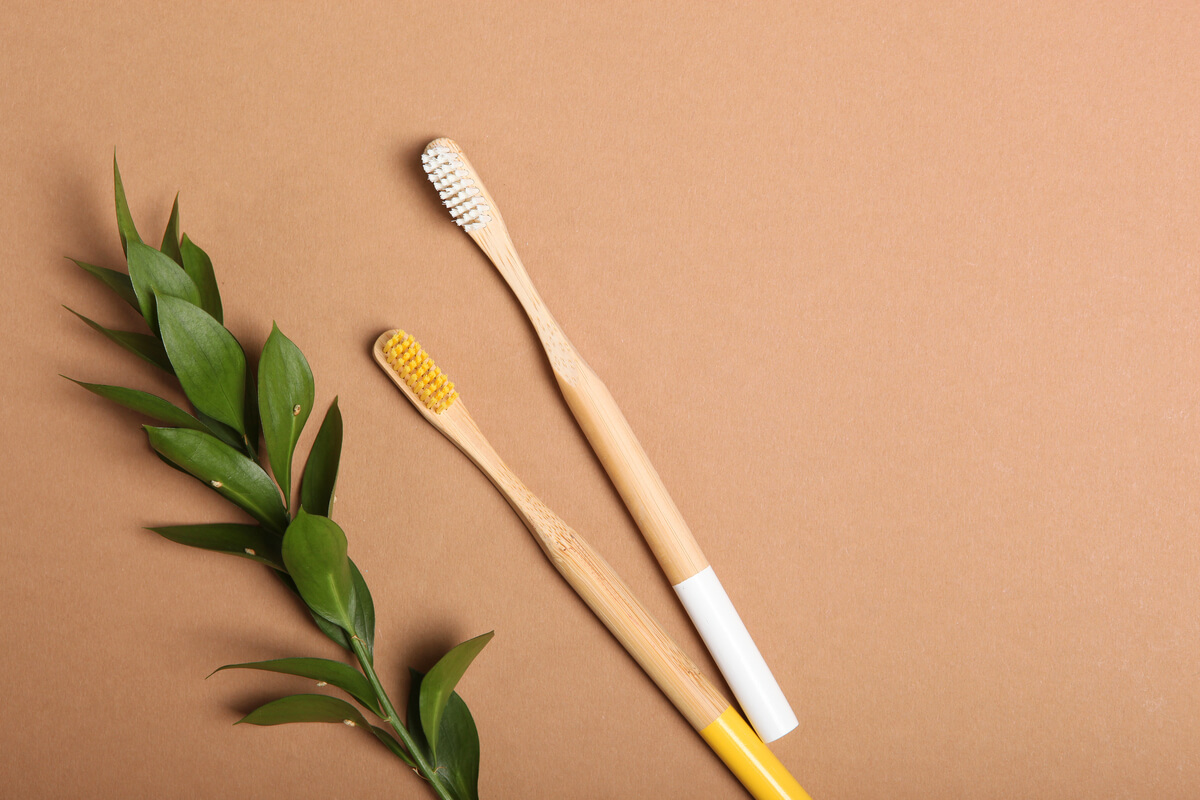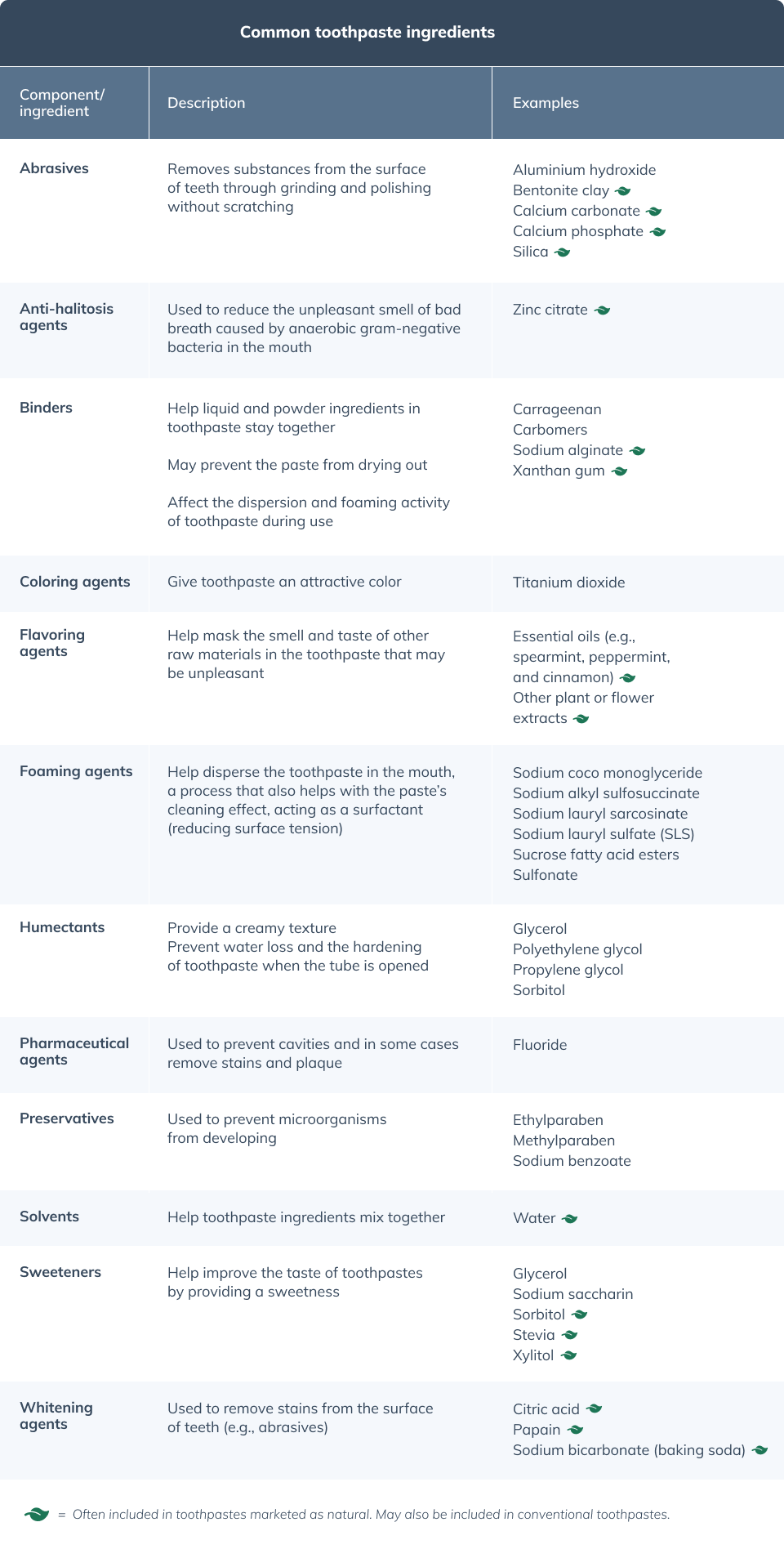Oral health
Oral health refers to the health of the teeth, throat, gums, and the bones surrounding the mouth. (11) Good oral health allows individuals to chew, taste, and swallow food properly, speak clearly, and more comfortably express themselves through facial expressions. (12) It’s important to look after your oral health by maintaining oral hygiene habits such as teeth brushing and flossing between the teeth. These habits help prevent oral health conditions such as periodontal disease. Good oral hygiene habits also strengthen and protect teeth from tooth caries (cavities). (15)Periodontal disease
Periodontal disease is a chronic inflammatory disease of the gums and bones that support the teeth. At its earliest stage, known as gingivitis, periodontal disease is reversible. Gingivitis, caused by the build up of dental plaque, is characterized by inflamed (swollen) gums that may also bleed. Dental plaque is made up of microbial biofilms (bacteria) that stick to the teeth. (15)(17) The more advanced stage of periodontal disease is called periodontitis, which occurs when dental plaque is left untreated. It is often irreversible and can lead to the gums separating from the teeth, the teeth loosening or falling out, and the loss of bone. (15)(17)Oral hygiene practices
The best way to control and prevent periodontal disease is to brush with toothpaste and floss your teeth every day in order to remove the bacteria that causes the condition. Visiting a dentist one to two times per year for a check-up and cleaning is also recommended. (15) Tooth brushing is performed using toothpaste in order to more efficiently clean the teeth, gums, and in some cases, depending on the type of toothpaste, further protect from tooth decay and sensitivity.
Brushing with toothpaste and flossing your teeth helps remove bacteria that causes periodontal disease and can prevent tooth decay.
Comparing natural toothpaste vs regular toothpaste
Today’s toothpastes are smooth with an appealing paste-like texture, and their ingredients differ depending on the type of toothpaste you choose to use. Understanding the ingredients included in different types and their benefits can help you choose a toothpaste that fits your needs.Toothpaste ingredients
In addition to cleaning and protecting the teeth from periodontal diseases and cavities, conventional toothpaste is manufactured to have a texture, smell, consistency, and appearance that’s attractive to the consumer. As a result, today’s standard toothpastes contain several different components, some of which may also be included in certain natural toothpastes. (23) Many natural toothpastes are marketed as herbal or organic toothpaste. They may contain fewer ingredients compared to standard toothpastes, but they may also have additional or alternative ingredients. Individuals may choose to seek out a more “natural” version of toothpaste in order to avoid certain components included in standard toothpastes such as artificial colorings and flavorings, preservatives, and pharmaceutical agents. Ingredients that are often excluded from toothpastes marked as “natural” are outlined below:- Artificial colors (e.g., titanium dioxide): Titanium dioxide is used to color toothpaste. It is considered safe in small amounts, but the effects of long-term exposure continue to be researched. (3)(20)
- Artificial sweeteners (e.g., sodium saccharin): Sodium saccharin is used to sweeten toothpaste and is an approved food additive. (7)(22) Researchers continue to examine it’s potential negative effects on gut health, but more research is needed. (18)
- Fluoride: Fluoride helps prevent decay and strengthen teeth. It may negatively affect hormone health, children’s neurological development, and excess may lead to fluorosis (tooth enamel defects) in children. (4)
- Parabens: Parabens are used to preserve and extend the shelf life of toothpaste. They may negatively affect certain hormones. (14)
- Propylene glycol: Propylene glycol is used to extend the shelf life of toothpaste. Prolonged or overuse may be harmful to health. (10)
- Sodium lauryl sulphate (SLS): SLS is used to help disperse toothpaste throughout the mouth. It may be a skin irritant. (8)
- Triclosan: Triclosan is an antimicrobial chemical used to prevent gingivitis that’s also included in certain soaps, detergents, and shampoos. Triclosan may be harmful to personal and environmental health. (6)

Natural toothpastes are often marketed as herbal or organic toothpastes.

There are various ingredients found in natural and standard toothpastes. (17)(23)
Do natural toothpastes work?
You may be wondering, does natural toothpaste work? The mechanical action of tooth brushing helps clean the teeth and reduce plaque build-up that can contribute to dental caries and lead to periodontal disease. (19) For this reason, both conventional and natural toothpastes along with tooth brushing clean the teeth and support oral health. (1)(16) It’s best to speak with your dentist about which toothpaste is best for your needs. Recommendations may vary depending on your age and oral health. A systematic review of studies compared toothpastes with different levels of fluoride for preventing dental caries in people of different ages. The results of the review concluded that compared with fluoride-free toothpaste, brushing with toothpaste that includes fluoride is beneficial for preventing dental caries. More research may be necessary to determine the effects of different concentrations of fluoride. Lastly, it’s recommended that the concentration of fluoride included in children’s toothpastes should be considered in order to prevent fluorosis (tooth enamel defects). (24)A systematic review and meta-analysis compared the effectiveness of herbal toothpaste to conventional toothpaste in reducing gingivitis in adults. Results demonstrated that herbal toothpaste may be as effective as non-herbal toothpaste for reducing plaque short-term. However, more well-controlled research studies are necessary to confirm these findings. (9) Another study aimed to compare the effectiveness of herbal toothpaste and conventional toothpaste for reducing dental plaque. Participants had similar levels of plaque at baseline and were divided into two groups. The first group brushed with the herbal toothpaste and the second with the conventional toothpaste. The herbal toothpaste contained sodium bicarbonate, coconut oil, peppermint essential oil, clove essential oil, and water. The conventional toothpaste contained stannous fluoride, aluminum oxide, triclosan, SLS, peppermint, and spearmint. Tooth brushing was supervised for five minutes after which time plaque amounts were measured. The process was repeated after a washout period of one week, and again after a second washout period but with the toothpastes switched between groups. Results demonstrated that both groups achieved statistically significant reductions in plaque scores following brushing compared to baseline. Both groups achieved good reductions in plaque. However, the conventional toothpaste was marginally more effective at reducing plaque than the prepared herbal toothpaste. (19)Did you know? The American Dental Association (ADA) considers fluoride in drinking water safe and effective for preventing tooth decay in both children and adults and recommends that fluoride be added to toothpaste. (5)(21)
Did you know? Fullscript offers several toothpastes in the product catalog.
The bottom line
Brushing your teeth with toothpaste and flossing between your teeth are oral hygiene habits that help prevent oral health conditions such as periodontal disease and dental caries. Visiting the dentist one to two times per year for a cleaning is also important. Both conventional and natural toothpastes can be beneficial to the teeth and mouth when tooth brushing and flossing are performed regularly (each day). Because there is no official definition for natural or organic toothpaste, some ingredients included in conventional toothpastes may also be included in toothpastes marketed as natural. It’s best to read the ingredients label and speak with your dentist about any questions or concerns you may have about your dental needs. For more information on how to choose the best natural toothpaste that fits your needs, check out the environmental working group’s list of toothpaste products.- Al-Kholani, A. I. (2011). Comparison between the efficacy of herbal and conventional dentifrices on established gingivitis. Dent Res J (Isfahan), 8(2), 57–63.
- Bergquist, B. L., Jefferson, K. G., Kintz, H. N., Barber, A. E., & Yeagley, A. A. (2017). Disconnecting the estrogen receptor binding properties and antimicrobial properties of parabens through 3,5-Substitution. ACS Medicinal Chemistry Letters, 9(1), 51–55.
- Carmo, T. L. L., Siqueira, P. R., Azevedo, V. C., Tavares, D., Pesenti, E. C., Cestari, M. M., Martinez, C. B. R., & Fernandes, M. N. (2019). Overview of the toxic effects of titanium dioxide nanoparticles in blood, liver, muscles, and brain of a neotropical detritivorous fish. Environmental Toxicology, 34(4), 457–468.
- Choi, A. L., Sun, G., Zhang, Y., & Grandjean, P. (2012). Developmental fluoride neurotoxicity: A systematic review and Meta-Analysis. Environmental Health Perspectives, 120(10), 1362–1368.
- Fluoride: Topical and systemic supplements. (2021). American Dental Association. https://www.ada.org/resources/research/science-and-research-institute/oral-health-topics/fluoride-topical-and-systemic-supplements
- Halden, R. U., Lindeman, A. E., Aiello, A. E., Andrews, D., Arnold, W. A., Fair, P., Fuoco, R. E., Geer, L. A., Johnson, P. I., Lohmann, R., McNeill, K., Sacks, V. P., Schettler, T., Weber, R., Zoeller, R. T., & Blum, A. (2017). The florence statement on triclosan and triclocarban. Environmental Health Perspectives, 125(6), 064501.
- Health Canada. (2021). 9. List of permitted sweeteners (lists of permitted food additives) – Canada.ca. Government of Canada. https://www.canada.ca/en/health-canada/services/food-nutrition/food-safety/food-additives/lists-permitted/9-sweeteners.html
- Herlofson, B. B., & Barkvoll, P. (1994). Sodium lauryl sulfate and recurrent aphthous ulcers: A preliminary study. Acta Odontologica Scandinavica, 52(5), 257–259.
- Janakiram, C., Venkitachalam, R., Fontelo, P., Iafolla, T. J., & Dye, B. A. (2020). Effectiveness of herbal oral care products in reducing dental plaque & gingivitis – a systematic review and meta-analysis. BMC Complementary Medicine and Therapies, 20(43).
- Lim, T. Y., Poole, R. L., & Pageler, N. M. (2014). Propylene glycol toxicity in children. The Journal of Pediatric Pharmacology and Therapeutics, 19(4), 277–282.
- Oral health. (2019). Office on Women’s Health. https://www.womenshealth.gov/a-z-topics/oral-health
- Oral Hygiene. (2020). National Institute of Dental and Craniofacial Research. https://www.nidcr.nih.gov/health-info/oral-hygiene
- The origin of toothpaste. (n.d.). Pennsylvania Dental Association. https://www.padental.org/Online/Public/Children/Origin_of_Toothpaste.aspx#:~
- Parabens in cosmetics. (2020). U.S. Food and Drug Administration. https://www.fda.gov/cosmetics/cosmetic-ingredients/parabens-cosmetics
- Periodontal disease. (2013). CDC. https://www.cdc.gov/oral-health/about/gum-periodontal-disease.html#:%7E:text=Periodontal%20diseases%20are%20mainly%20the,red%2C%20and%20they%20may%20bleed
- Radafsharl, G., Mahboob, F., & Kazemnejad, E. (2010). 469 downloads 357 citations 0 a study to assess the plaque inhibitory action of herbal-based toothpaste: A double blind controlled clinical trial. Academic Journals, 4(12), 1182–1186.
- Rajendiran, M., Trivedi, H. M., Chen, D., Gajendrareddy, P., & Chen, L. (2021). Recent development of active ingredients in mouthwashes and toothpastes for periodontal diseases. Molecules, 26(7), 2001.
- Ruiz-Ojeda, F. J., Plaza-Díaz, J., Sáez-Lara, M. J., & Gil, A. (2019). Effects of sweeteners on the gut microbiota: A review of experimental studies and clinical trials. Advances in Nutrition, 10(suppl_1), S31–S48.
- Shanmugapriya, R., Arunmozhi, U., Kadhiresan, R., Sabitha, S., Anirudhya, R., & Sujatha, G. (2019a). Comparison of antiplaque effectiveness of herbal toothpaste: A randomized triple-blinded cross-over clinical trial. AYU (An International Quarterly Journal of Research in Ayurveda), 40(2), 109.
- Skocaj, M., Filipic, M., Petkovic, J., & Novak, S. (2011). Titanium dioxide in our everyday life; is it safe? Radiology and Oncology, 45(4), 227–247.
- Toothpastes. (2021). American Dental Association. https://www.ada.org/resources/research/science-and-research-institute/oral-health-topics/toothpastes
- Touyz, L. Z. (2011). Saccharin deemed “Not hazardous” in united states and abroad. Current Oncology, 18(5), 213–214.
- Vranic, E., Lacevic, A., Mehmedagic, A., & Uzunovic, A. (2004). FORMULATION INGREDIENTS FOR TOOTHPASTES AND MOUTHWASHES. Bosn J Basic Med Sci, 4(4), 51–58.
- Walsh, T., Worthington, H. V., Glenny, A. M., Marinho, V. C., & Jeroncic, A. (2019). Fluoride toothpastes of different concentrations for preventing dental caries. Cochrane Database of Systematic Reviews.
- Who invented the toothbrush and when was it invented? (2019). The Library of Congress. https://www.loc.gov/everyday-mysteries/item/who-invented-the-toothbrush-and-when-was-it-invented/





